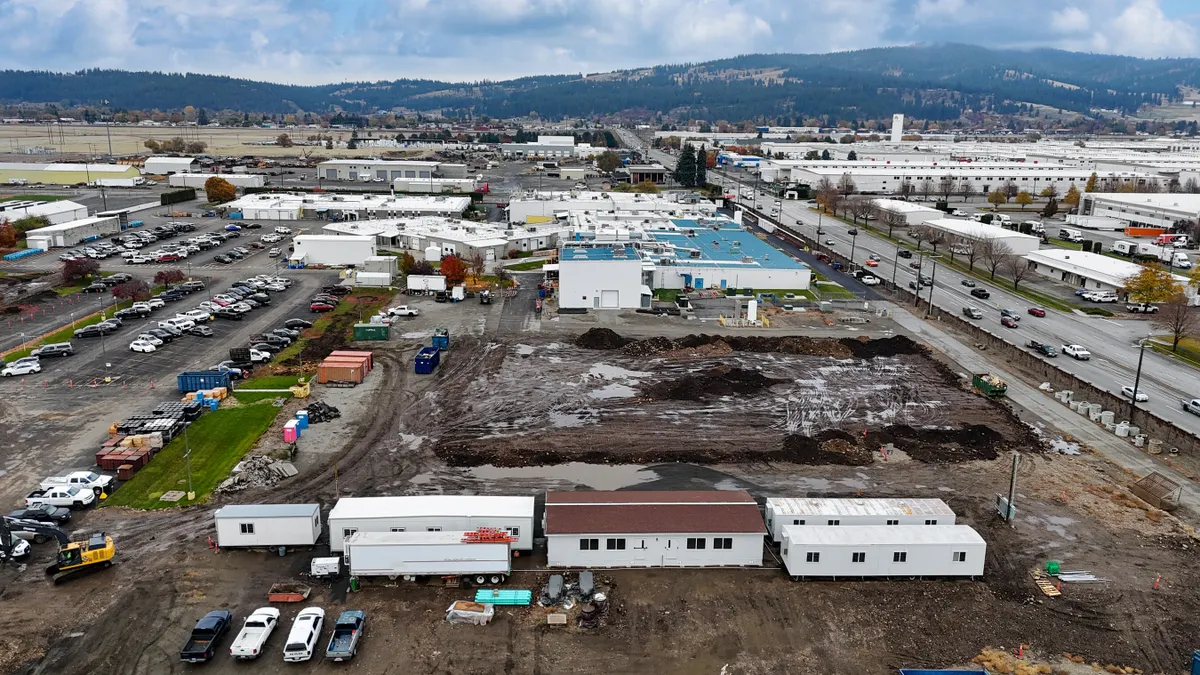Skanska USA this week accused Salesforce Transit Center officials of ignoring the role design played in the shutdown of the $2.2 billion San Francisco facility in September, a month after it opened.
Skanska subcontracted the center’s structural steelwork from general contractor Webcor Obayashi, and, in August, transit center workers discovered significant cracks in two steel beams. In a statement sent to Construction Dive, Skanska maintains that it and steel fabricator Herrick Corp. performed the work to specifications and as directed by the Transbay Joint Power Authority’s (TJPA) engineer, Thornton Tomasetti.
It was Thornton Tomasetti, Skanska said, that directed it to cut the girder holes that turned out to be the trigger point for the larger fractures, according to a subsequent investigation by the authority.
However, Skanska said it takes issue with what it characterizes as the authority’s attempts to downplay Thornton Tomasetti's and its own parts in the deficient beams. "TJPA officials have made incorrect statements around the agency’s responsibility for the girder inspection process,” Skanska said, "as well as the role and actions of their designer, Thornton Tomasetti, who was responsible for the structural design of the facility.”
Earlier this month, Mark Zabaneh, the authority’s executive director, and another agency consultant told the authority’s board that the two cracked beams were the result of a “failure of quality control in the construction process” and that four levels of inspections — carried out by Skanska, Herrick, Webcor Obayashi and the authority’s quality-assurance contractor Turner Construction — missed the fact that the pre-welding grinding necessary to prevent the holes from developing into bigger cracks had not been done.
Zabaneh added that because of the inspection and quality control failures, the authority was reviewing “tens of thousands” of project documents to make sure that no other major flaws had been missed. As of March 14, authority officials said they had not found any additional problems and were about 85% complete with their examination.
“We owe the public a thorough, transparent and independent review of exactly what happened. I am confident that the process in place is fair, solicits and considers the feedback of all concerned parties, and is taking all of the facts into consideration," Zabaneh told Construction Dive via email. "Not everyone is going to like the results, but we are only going where the facts and evidence lead. At the end of the day, the public was let down and we intend to hold the responsible party accountable.”
Delivering a defect-free is the responsibility of the contractor, the authority maintained. The TJPA board is not the forum to present findings from all parties, it added, but to field and present updates to fulfill their oversight duties. Cause, however, is being determined solely by the peer review panel.
However, Skanska maintains that the authority has let Thornton Tomasetti off the hook for the engineering firm's part in the beam deficiencies. "TJPA has made repeated attempts to downplay Thornton Tomasetti’s responsibility for these cuts,” Skanska said, "despite clear evidence to the contrary.”
Early legal action
In October, unrelated to the fractured beams, the Webcor Obayashi joint venture filed a $150 million lawsuit against the authority alleging breach of contract. The contractor claims that the authority did not make "critical decisions required to keep the project on time and on budget,” resulting in more than 12,000 requests for information, including those related to errors and omissions in the transit center’s design.
Skanska said its independent testing shows it was the center’s design that made the girders susceptible to cracking and that it wants to present that evidence to the TJPA board but has been denied the opportunity.
Skanska and all other contractors, according to authority officials, agreed to the TJPA's testing and review process of the fractured beams and added that Skanska has presented its evidence to a peer review panel, which has been tasked with evaluating evidence related to the cracks. The authority has made no determination about Skanska’s claims but said it is the contractor’s responsibility to deliver a defect-free product.
Beam repairs and reinforcement of other steel members at the center are set to begin as soon as the necessary materials arrive onsite. The work should be completed this summer, but transit center officials still have not identified a potential re-opening date for the facility.




















